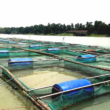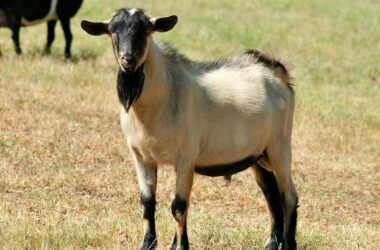Fish farming in Kenya has evolved from a simple subsistence activity into a lucrative commercial venture. With growing market demand and strong government support, now’s the perfect time to dive into this promising sector. Whether you’re a budding entrepreneur or a farmer looking to diversify, this comprehensive guide will walk you through everything you need to know about starting a successful fish farm in Kenya.
What is Fish Farming and Why Kenya?
Fish farming (aquaculture) in Kenya has seen impressive growth recently, now contributing roughly 1% to the country’s agricultural GDP – and that number is climbing. The industry primarily focuses on three main species: tilapia, African catfish, and rainbow trout, with tilapia dominating production volumes.
Kenya’s fish farming landscape is divided into two main categories:
- Marine aquaculture – Despite Kenya’s extensive coastline along the Indian Ocean offering huge potential, this sector remains largely untapped
- Freshwater culture – The dominant form, further classified into cold water culture (rainbow trout in highland areas) and warm water culture (tilapia, catfish, common carp, and ornamental fish in lowland regions)
Currently, Kenya produces over 24,000 metric tons of farmed fish annually, creating approximately 250,000 jobs while reducing pressure on natural water bodies. With demand projected to grow by 10% annually due to increasing health consciousness, population growth, and urbanization, fish farming presents a serious opportunity for entrepreneurs.
Planning Your Fish Farm: First Steps
Before you start digging ponds or buying fingerlings, you need a solid plan. Here’s how to approach the initial planning phase:
Choosing the Right Location
Your farm’s location can make or break your success. When selecting a site, consider these crucial factors:
- Climate suitability for your chosen fish species (preferably indigenous to the area)
- Well-drained land protected from floods
- Suitable topography and soil for constructing your chosen production system
- Adequate supply of good quality water throughout the year
- Accessibility throughout the production cycle
- Proximity to services, technical assistance, and markets
- Sufficient space for current operations and future expansion
- Compliance with local and environmental management regulations
- Infrastructure availability, including roads for transporting supplies and products
Access to clean, year-round water supply is particularly critical, as it’s the “life line of aquaculture.” The water should be free from pollutants such as pesticides and other harmful chemicals.
Selecting Your Production System
Based on your resources, expertise, and business goals, you can choose from three main production systems:
1. Extensive Systems
- Minimal inputs required
- Fish stocked in cages, earthen ponds, or water impoundments
- Fish left to feed naturally with low stocking densities
- Yields: 500-1500 Kg/Ha/year
- Common among small-scale, subsistence farmers in rural Kenya
2. Semi-intensive Systems
- Represent the bulk of Kenya’s aquaculture production
- Utilize still water earthen ponds or cages
- Combine natural water productivity with supplementary feeding
- Higher yields than extensive systems
- Most accessible for beginners with moderate investment
3. Intensive Systems
- High-investment, high-operational-cost systems
- Employ raceways, tanks, or floating cages with complete feeding and water aeration
- Require less land than other systems but demand high-quality water
- Typically used for high-value fish like rainbow trout
- Production ranges from 10-50 Kg/m²/year, depending on management practices and feed quality
For beginners, starting with one or two small ponds of about 300 square meters each allows for learning without excessive risk.

Creating a Business Plan
Before breaking ground, develop a comprehensive business plan outlining your goals, target market, production capacity, financial projections, and marketing strategy. A solid business plan should include:
- Clear objectives and production targets
- Market analysis and sales strategy
- Detailed financial projections (startup costs, operational expenses, revenue forecasts)
- Risk assessment and mitigation strategies
- Production timeline and growth plans
A sample business plan demonstrates how a small-scale operation can plan to produce 10 metric tons of table-size tilapia annually with an initial investment of approximately KES 502,351 (US $5,023.51).
Setting Up Your Fish Farm
Now that you’ve completed your planning phase, it’s time to set up your fish farm. Here’s a breakdown of the key steps:
Pond Construction Options
You have three main options for pond construction:
| Pond Type | Cost Range (KES) | Pros | Cons |
|---|---|---|---|
| Earthen Ponds | 50,000-100,000 | Most affordable option, natural environment | May experience water leakage |
| Lined Ponds | 100,000-200,000 | Prevents leakage, more reliable | Higher initial investment |
| Concrete Ponds | 200,000+ | Durable, easy to clean | Most expensive option |
When constructing ponds, ensure they include:
- An inlet for adding fresh water
- An outlet for draining
- A sloping bottom for easier harvesting
Water Management Essentials
Effective water management is essential for healthy fish and optimal growth:
- Monitor water quality parameters weekly, including pH, ammonia levels, and dissolved oxygen
- Maintain regular water flow using pumps or gravity systems
- Be attentive to weather conditions, as heavy rains or drought can affect your pond ecosystem
In drier regions, consider harvesting rainwater. Some Kenyan farmers use greenhouses over ponds to reduce evaporation and maintain water temperature.
Stocking Your Pond
Once your pond is ready:
- Purchase fingerlings (young fish) from a reputable hatchery
- Transport them carefully in oxygenated bags
- Gradually acclimate them to your pond water before release
For tilapia in earthen ponds, a stocking density of 2-3 fish per square meter is recommended, meaning a 300 square meter pond could accommodate 600-900 fingerlings.
Day-to-Day Operations
Running a successful fish farm requires consistent management and attention to detail. Here are the key operational aspects to focus on:
Feed Management
Feed represents one of the highest operational costs in fish farming. Options include:
- Natural pond productivity (for extensive systems)
- Supplementary feeding with locally available ingredients
- Commercial complete feeds specifically formulated for your fish species
For semi-intensive and intensive systems, quality feed is crucial for optimal growth and health. Some Kenyan farmers are exploring organic feed options as part of sustainable farming practices.
Health Management
Preventing disease is more effective than treating outbreaks. The national aquatic animal health and welfare monitoring plan, developed by the Director-General in consultation with designated agencies, provides guidelines for fish health management. Regularly:
- Monitor your fish for signs of stress or disease
- Maintain optimal water quality
- Practice good biosecurity measures
Harvesting and Marketing Strategies
Plan your harvesting schedule based on market demand and fish growth rates. Tilapia typically reaches market size (about 500g) in 6-8 months, while catfish may grow slightly faster under optimal conditions.
Developing diverse marketing channels helps reduce market risks. Consider:
- Direct sales to hotels and restaurants
- Local markets
- Processors
- Export opportunities (if production scale permits)

Legal Requirements for Fish Farming in Kenya
Understanding and complying with legal requirements is essential for legitimate operation:
Licensing
According to the Fisheries Management and Development regulations, you must obtain appropriate licenses to operate an aquaculture facility in Kenya. The licensing process requires meeting conditions outlined in section 122 of the Fisheries Act, including taking reasonable measures to minimize harmful environmental impacts caused by aquaculture activities.
Permits and Environmental Considerations
Specific permits are required for activities such as seed and feed production, and these may be issued per consignment as specified in the permit. Requirements for seed and feed production facilities are outlined in section 17 of the regulations.
Fish farmers in Kenya are obligated to protect transboundary aquatic ecosystems and minimize environmental impacts. This includes:
- Proper waste management
- Prevention of escapees into natural water bodies
- Responsible use of chemicals and medications
Financial Aspects of Fish Farming in Kenya
Understanding the financial side of fish farming helps set realistic expectations and ensures proper resource allocation.
Start-up Costs
Initial investment varies depending on scale and system:
- Small-scale operations: KES 50,000-500,000
- Earthen pond (small): KES 50,000-100,000
- Lined pond: KES 100,000-200,000
- Concrete pond: KES 200,000 or more
Additional costs include fingerlings, feed, equipment, water supply systems, and possibly labor.
Operational Costs
Ongoing expenses include:
- Fish feed (largest operational cost)
- Water management
- Disease prevention and treatment
- Labor
- Marketing and transportation
- Electricity (for pumps and equipment)
Potential Returns
With proper management, fish farming can be profitable. A sample business plan projects pre-tax profits of approximately KES 499,649 (US $4,996.49) annually from the first harvest, with expected growth as production increases.
Success Story: Innovation in Kenyan Fish Farming
A successful catfish farm in Kenya demonstrates several innovative approaches worth emulating:
- Raised Pond Design: Improves water control and reduces threats to fish
- Water Management: Uses a borehole and solar pump to ensure consistent water quality
- Integrated Farming: Combines fish and vegetable farming for resource optimization and multiple income streams
- Modern Techniques: Employs water purification, temperature control, and organic feed production
The farmer addresses common challenges like cannibalism by sorting catfish by size and providing adequate space, while reducing market risks through customer diversification. This operation emphasizes climate-smart agriculture by using local materials and conservation methods that minimize environmental impact.
The farm’s success has inspired others in the community to adopt fish farming, contributing to improved local nutrition and economic development. The farmer emphasizes three key principles: thorough planning, continuous innovation, and market awareness.
Common Challenges and Practical Solutions
Fish farming in Kenya comes with its challenges. Here’s how to navigate them:
| Challenge | Solution |
|---|---|
| Water Scarcity | Implement rainwater harvesting, recirculating systems, or greenhouse covers to reduce evaporation |
| High Input Costs | Start small, expand gradually, and explore integrated farming to maximize resource efficiency |
| Disease Outbreaks | Maintain optimal water quality, proper stocking densities, and biosecurity measures |
| Market Access | Diversify customer base, explore value addition, and join farmer associations for collective marketing |
| Technical Knowledge | Seek training from government extension services, join local fish farming associations, and learn from experienced farmers |
Conclusion: The Future of Fish Farming in Kenya
Fish farming presents a significant opportunity for entrepreneurs and farmers in Kenya, driven by growing demand for fish protein, government support, and the potential for sustainable profits. By carefully selecting an appropriate site, implementing suitable production systems, following best management practices, and adhering to regulatory requirements, you can establish a successful aquaculture venture.
Starting small and expanding gradually allows for learning and adaptation, while maintaining thorough records helps optimize operations over time. Integrated farming approaches, such as combining fish production with vegetable growing using nutrient-rich pond water, can create multiple income streams and improve resource efficiency.
As Kenya’s population continues to grow and protein demand increases, well-managed fish farms contribute not only to business success but also to food security, job creation, and environmental sustainability. With determination, proper planning, and attention to detail, fish farming in Kenya offers a viable path to both personal prosperity and community development.
Ready to take the plunge? Start by researching local hatcheries, connecting with successful fish farmers in your area, and reaching out to government extension services for additional guidance. Your fish farming journey begins now!










